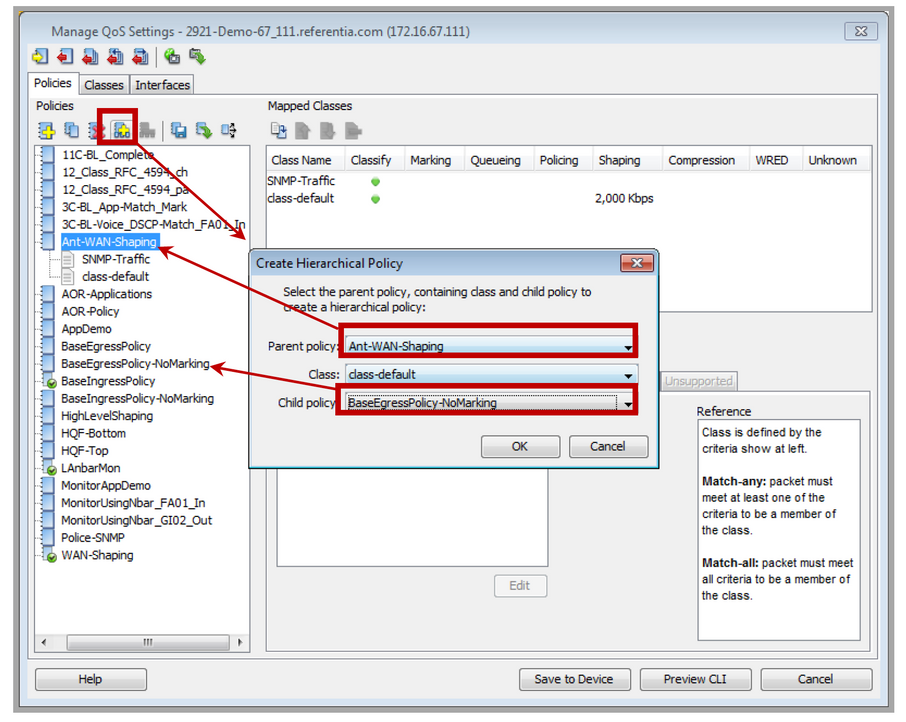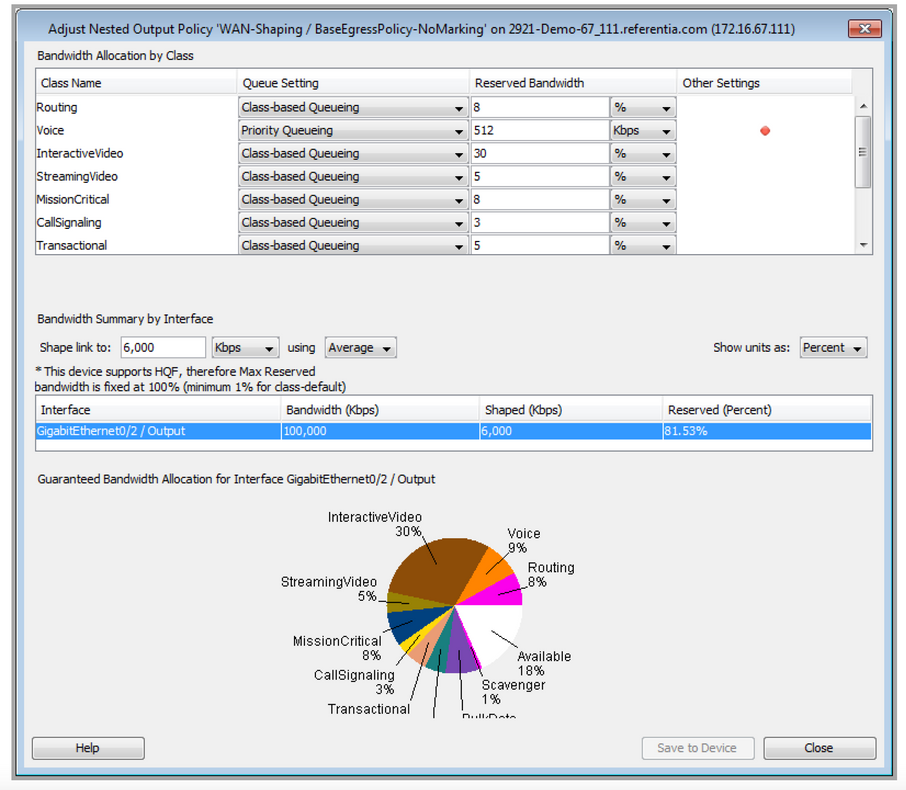WAN Link Shaping
QoS polices for WAN aggregators typically configure various queuing, marking, shaping, policing, and link fragmentation settings. In most cases, there is a link-speed mismatch between the internal network speed and the external WAN link speed. In such cases, the best method is to use a hierarchical policy where the QoS policy is shaped to the link capacity of the WAN.

Creating a hierarchical WAN link-shaping policy involves creating a high-level (parent) shaping policy and then associating it with a lower-level (child) policy that actually defines the classes. In the following image, the high-level parent shaping policy basically consists of a class default that has an average shaping value set to the link capacity. A standard 11-class base child policy is then associated using the hierarchical policy dialog box, or by simply dragging the child policy onto the class default of the parent.
When applied to an interface, this policy forces the interface to shape all outgoing traffic to the class default shaping. Once shaped, the lower level QoS policy enforces the bandwidth requirements based on the shaped value and not the raw interface speed itself.
The easiest way to set up a hierarchical policy is to use the template-creation wizard built into the LiveNX software to guide you through the process of automatically creating a hierarchical policy.

